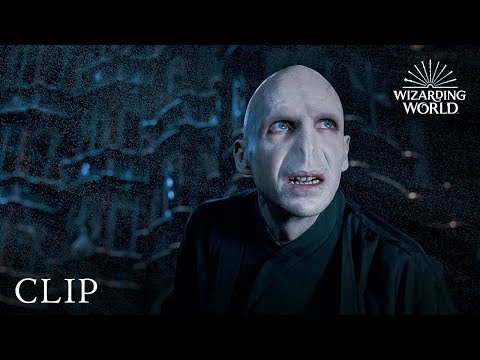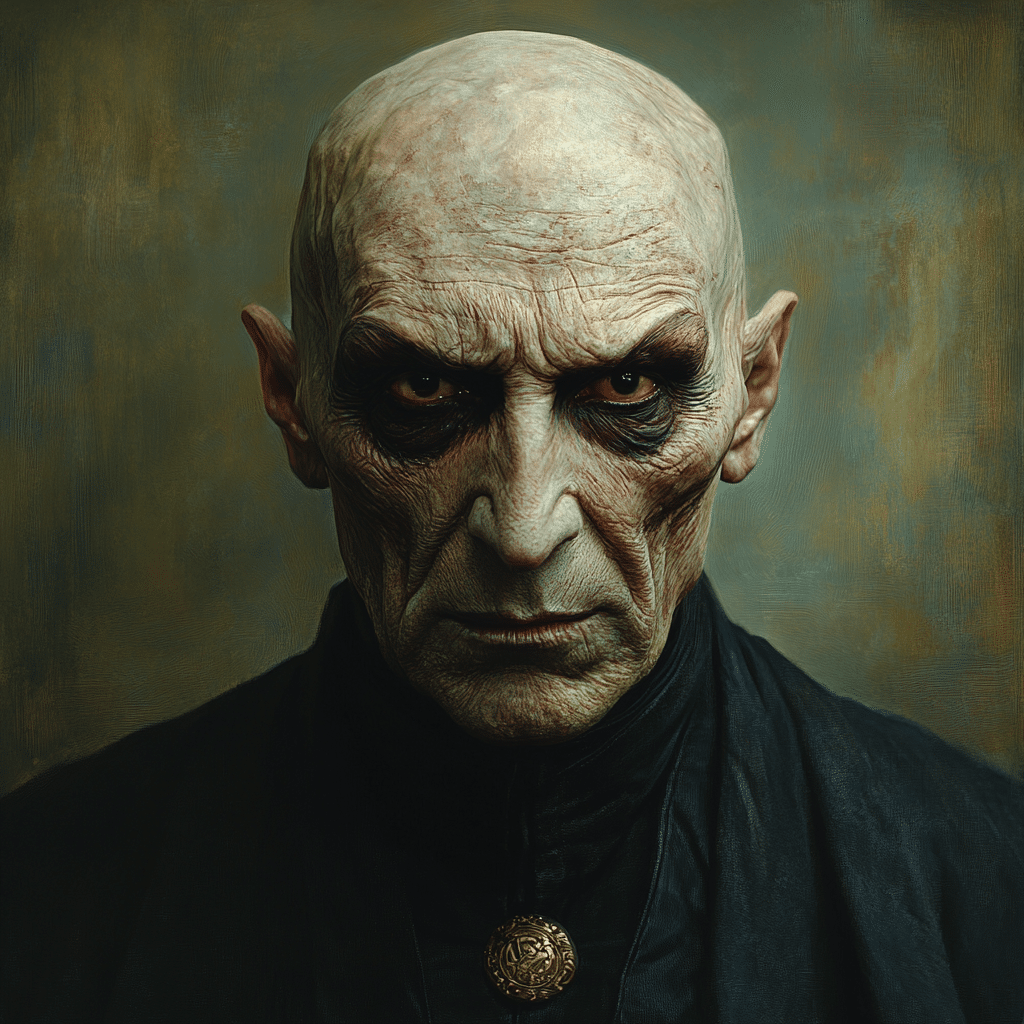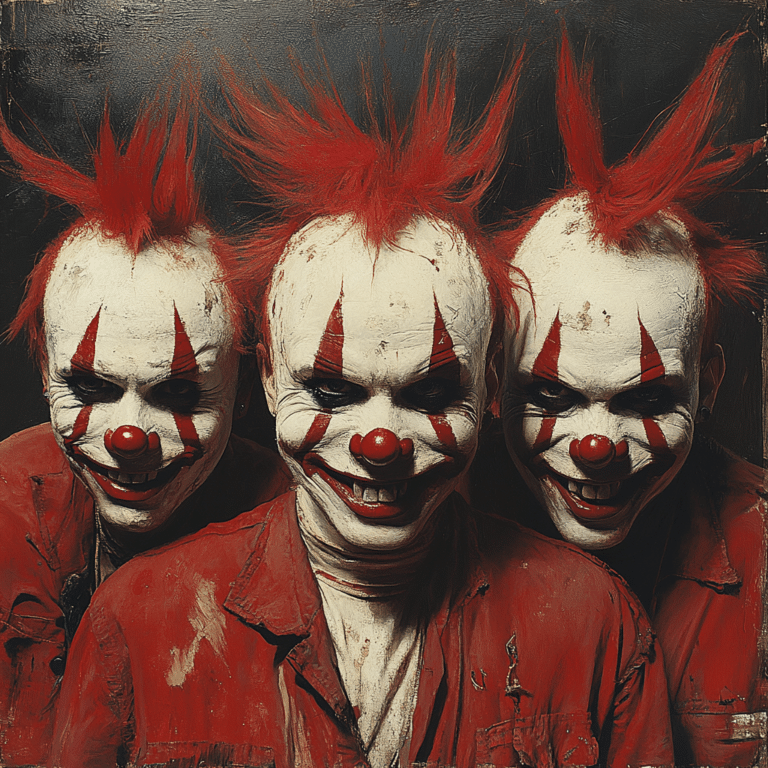Ah, Lord Voldemort. Just saying the name sends shivers down your spine, doesn’t it? Created by the brilliant J.K. Rowling, this character has climbed right to the top of the villain charts. He’s a cultural icon that embodies evil, fear, and the timeless battle between light and dark. But how did this dark wizard evolve from a mere orphan named Tom Marvolo Riddle into one of the most infamous villains in literature? Buckle up! We’re diving deep into his shocking transformation and exploring his psychological and physical metamorphosis. And don’t worry, we’ll sprinkle in some comparisons to other legendary baddies, like Baron Vladimir Harkonnen from Dune.

7 Transformative Phases of Lord Voldemort’s Character

1. Childhood and Early Years
Let’s start at the beginning. Born on December 31, 1926, Tom Riddle had a rough start to life. His mother, Merope, died during childbirth, leaving him in a Muggle orphanage to grow up all alone. Talk about an abandonment issue! This experience laid the groundwork for his future as a dark wizard. As he matured, Tom discovered his magical abilities, but instead of using them for good, they fueled his desire for revenge against a world that had rejected him.

2. The Emergence of the Dark Lord
Fast forward to his Hogwarts years, and it’s clear that Riddle is no ordinary student. Sorted into Slytherin House, he used his charisma and intelligence to charm his peers. However, this is where he begins to shed his old identity. Riddle takes on the name Lord Voldemort, signifying his full embrace of darkness. With a loyal crew of followers known as the Death Eaters, he begins his campaign of terror. Who could resist a villain who brings a touch of drama to the magical world?
3. The Quest for Immortality
One of the most jaw-dropping transformations happens with Voldemort’s all-consuming quest for immortality. Sure, we all want to live forever, but Voldemort’s methods are, let’s say, aggressive. He turns to dark magic, creating Horcruxes—essentially pieces of his fragmented soul hidden in various objects. The more he splits his soul, the more he loses his humanity. Each Horcrux embodies not just his fear of death, but his complete desire to conquer mortality. We’re talking about a haunting desperation, folks!
4. The Distorted Form
As Voldemort delves deeper into darkness, a side effect emerges: his appearance becomes downright grotesque. With skin so pale it looks like it hasn’t seen sunlight in centuries, slitted nostrils, and eyes as red as rubies, he’s hard to miss. This horrifying transformation not only sets him apart from other wizards but serves as a clear metaphor for his lost humanity. Much like Baron Vladimir Harkonnen, whose own appearance signifies his moral decay, Voldemort’s look screams ‘evil incarnate.’ Both characters remind us that true monstrosity has a way of revealing itself visually.
5. A Mind Like No Other
The transformation doesn’t stop at appearances; Voldemort’s mind becomes a weapon of manipulation. He becomes a master at psychological games, instilling fear, and devising dastardly plans to seize power. His tactics remind us of Harkonnen’s ruthless psychological torture in Dune. Both villains show us that intelligence can be as terrifying as any physical power, turning ordinary individuals into unwitting pawns in their grand schemes.
6. The Return to Power
In Harry Potter and the Goblet of Fire, we witness a spectacular rebirth of Lord Voldemort. This reinvention is like a villain renaissance, showcasing his renewed ambition for domination. His methods get more brutal, emphasizing his desperation to reclaim lost glory. From a strategic standpoint, this shift in tactics is fascinating—it’s as if Voldemort realizes that his prior ways aren’t cutting it anymore. This evolution keeps us on edge, wondering what he’s plotting next!
7. Ultimate Defeat and Legacy
Alas, even the mightiest of dark wizards face their reckoning. In Harry Potter and the Deathly Hallows, Voldemort’s eventual demise serves as a cautionary tale. His fall signals a critique of unchecked ambition and loss of humanity. Just like West Duchovny’s commentary on youth culture, Voldemort’s downfall serves as a stark warning: chasing power can lead you down a dark and perilous path. And let’s face it, being blown away by a spell is not how you want your legacy to read!

A Comparative Study: Voldemort vs. Baron Vladimir Harkonnen
So how does our boy Voldemort stack up against Baron Vladimir Harkonnen? It’s a fascinating juxtaposition. Voldemort’s descent into darkness is rife with existential dread and childhood trauma, while Harkonnen embodies a different shade of evil—aristocratic decadence and tyrannical control.
Both characters offer a rich tapestry of villainy that captivates audiences and invites us to explore the deeper themes of morality and malevolence in storytelling.
Conclusion of Transformation and Cultural Impact
Voldemort’s transformation from Tom Riddle into the Dark Lord is nothing short of riveting. His journey melds psychological depth with visual horror, showcasing how multifaceted a villain can be. The story compels us to delve into our deepest fears and desires. And let’s not overlook how these timeless themes continue to resonate in today’s culture. Characters like Voldemort leave an indelible mark, influencing emerging tales spanning gothic horror and epic fantasy. So, while Hogwarts might be a magical place, it’s also a reminder that darkness can emerge from the most unexpected corners of life!
If you’re as intrigued as I am by the legacies of these captivating characters, keep following www.LoadedDiceFilms.com for more in-depth perspectives on cinema’s most iconic villains! After all, who doesn’t love a good story?

Lord Voldemort: The Dark Wizard’s Shocking Transformation
Rise of Darkness
When we think of Lord Voldemort, we often picture a terrifying figure cloaked in darkness. But did you know that his real identity as Tom Riddle draws disdain and fear from various parts of literature and pop culture? Just as Jean Michel Basquiat revolutionized the art world, Voldemort revolutionized the concept of villainy in literature. Fans often wonder what drove his transformation from a mere orphan to the most feared dark wizard. His insatiable thirst for power echoes themes found in various narratives, similar to those seen in the tale of modern-day horrors—like the unsettling film, Begotten. Both explore the darkness within and the quest for dominance.
A Mysterious Influence
In addition to his dark past, Voldemort’s distorted spirit is echoed in real-world figures and narratives that embody the complex interplay of villainy and ambition. Just like linda ikeji constantly reshapes her narrative in media, Voldemort constantly strives to reshape the wizarding world in his image. This dynamic portrayal raises unsettling questions about ambition. At the same time, his character reflects an ominous musicality, drawing parallels with figures like Jennie Finch, who, although celebrated for her sportsmanship, embodies that same competitive spirit and dedication. As Voldemort delves deeper into dark magic, he becomes unrecognizable, much like artists who lose themselves in their craft.
The Transformation into Terror
What truly sets Voldemort apart is his chilling evolution. From a once ordinary wizard, his thirst for immortality led him to unspeakable acts—splitting his soul for power. This transformation mirrors the breathtaking artistry found in Dolce Gabbana The One, which captivates with its boldness yet can represent the struggle for identity. Voldemort’s allure lives on today, stimulating endless discussion about his character, much like the debates surrounding the Superman vs Batman cast. Each interpretation spins a new tale, enticing fans who delve into thematic complexities. His journey from a young boy longing for belonging to a malevolent force leaves us questioning: how far are we willing to go to achieve our desires?

What is the story of Voldemort?
Voldemort, born Tom Marvolo Riddle, had a rough start, losing his mother at birth and growing up in an orphanage. He later became obsessed with power and immortality, leading him to commit horrific acts, including murdering his own father and grandparents. His transformation into Lord Voldemort marked his complete break from his past, fueled by a desire for dominance over both wizards and Muggles.
How many actors played Voldemort?
Six actors have portrayed Voldemort across the Harry Potter films, with Ralph Fiennes being the best-known. With the new HBO Harry Potter TV series on the horizon, a seventh actor is set to bring the character to life. Some folks might think Fiennes voiced Voldemort’s face in Quirrel’s head, but that’s a common misconception.
Who is Voldemort’s wife?
Voldemort didn’t have a wife in the traditional sense, but he and Bellatrix Lestrange had a child together. Their daughter, known as Delphi, is a character introduced in the “Cursed Child” play. Voldemort’s inability to truly love anyone made their relationship purely functional and devoid of any real affection.
Why did Tom Riddle become Voldemort?
Tom Riddle rebranded as Voldemort after rejecting his Muggle heritage and the shame associated with it, including his father’s name. He crafted his new identity around his thirst for power, wanting a name that sounded more imposing. This change was part of his journey into dark magic and his transformation into a fearsome dark wizard.
Why did Voldemort turn evil?
Voldemort turned evil because of his traumatic childhood experiences, which fostered feelings of abandonment and betrayal. He became fixated on revenge and superiority, driving him towards dark magic and making him the most feared dark wizard. His complex backstory highlights how his early life influenced his later choices.
Who is Voldemort’s son?
Voldemort’s son is Delphi, a character from “Harry Potter and the Cursed Child.” She’s not just a regular character but plays a significant role in the storyline involving time travel and her parentage. Delphi embodies her father’s dark ambitions while also navigating her own identity.
Who killed Voldemort?
Harry Potter ultimately killed Voldemort in “Deathly Hallows – Part 2,” using an Expelliarmus spell. By the end, Voldemort’s own Killing Curse rebounded upon him due to the Elder Wand’s loyalty to Harry. This surprising twist leaves many wondering how a mere Hogwarts student could defeat such a powerful foe.
How did Voldemort and Bellatrix have a baby?
Voldemort and Bellatrix had a baby through a dark union, reflecting their twisted loyalty to Voldemort’s ideals rather than love. The circumstances of their child’s conception aren’t fully depicted, but it’s clear their relationship was rooted in their shared commitment to the dark arts and not in traditional family values.
What made Voldemort so powerful?
Voldemort’s immense power stemmed from his strong mastery of magic, particularly dark magic, and his quest for immortality through Horcruxes. His relentless pursuit of power, along with his cunning and willingness to exploit others, made him one of the most formidable dark wizards in history.
Who is Draco’s boyfriend?
Draco Malfoy’s boyfriend is Theo Nott, a character who appears in various Harry Potter-related works, including fan fiction and adaptations. Their relationship is often explored to show different dynamics within the Slytherin house and among characters who share a complicated past.
Where was Voldemort buried?
Voldemort was never officially buried due to the circumstances of his death. He was defeated at Hogwarts, and with such a notorious legacy, his body was likely not honored or given a proper burial. The focus remained on the victory over his dark reign rather than the end of his life.
How was Bellatrix killed?
Bellatrix Lestrange was killed by Molly Weasley during the Battle of Hogwarts. In a fierce duel, Molly’s protective instincts for her children fueled her rage against Bellatrix, leading to a memorable confrontation that signified the triumph of good over evil.
Why did Dumbledore hate Tom Riddle?
Dumbledore held a deep-seated disdain for Tom Riddle partly because he recognized Riddle’s potential for great evil. Dumbledore saw how Riddle’s abandonment and insecurities twisted him into a monster, and he placed a heavy weight on Tom’s decisions, believing he could have chosen a different path.
Why did Voldemort lose his nose?
Voldemort lost his nose as a manifestation of his dark nature and the effects of his use of dark magic. After creating multiple Horcruxes and transforming himself through various means, his appearance became serpentine, leading to the loss of his human features, including his nose.
Why is Snape the half-blood prince?
Severus Snape is referred to as the “Half-Blood Prince” because of his mixed heritage; his mother was a witch and his father was a Muggle. This term reflects his complicated identity and connection to both worlds, contributing to his depth as a character in the series.






















